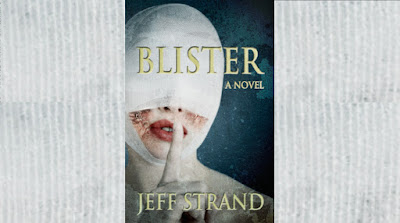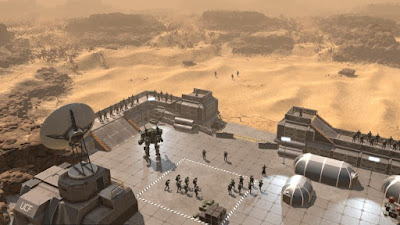IndieDev Interview: Beard Envy
When I was browsing the
new releases on Steam a short while ago, my attention was drawn by a
newly released puzzle game called Filament. The game itself
looked intriguing, but seeing that you could buy the “Marmalade
edition”, and reading that the developer is called Beard Envy... I
just had to go to the developer website. Once there, I
read about the plucky UK-based three-man team who make up the “Great
Emanating Beard”, and had soon secured an interview with one
whisker of said beard: Ben Webster. He tells us about the virtues of
game jams, the challenges of creating a puzzle game, and also imparts
a few of the lessons the team has learned along the way.
Casey: If
someone looks at the Beard Envy website, they won’t fail to notice
the humour and whimsy that the text contains. Even the circumstances
of how the three of you came together to make Filament, your
newly released game, also seem to fall under ‘whim’. How did two
games artists and a visual effects artist come together to create
Beard Envy, and what was the learning curve like as you all expanded
your areas of expertise to accommodate the wider elements of game
creation?
Ben: Injecting a
little humour into the website was a bit of a crutch to motivate us
to actually do it, web design isn't exactly our thing. Regarding
coming together to form Beard Envy: we were already good friends and
began doing weekend game jams in our free time. We enjoyed doing it
and we liked our outcomes from the game jams, so decided to give
making a full game a go. The learning curve was not only huge, but
something that took a long time. Even now after Filament is
done, we're still learning things from it. We have a giant list of
things we did in Filament which we wish we had done
differently, but that's hindsight, ey?
C: In 2017, you
entered the Epic Megajam and had to create a game to suit the theme
“However vast the darkness, we must supply our own light.” This
is where Filament was born. What was it like to create a game
in seven days, which tools helped you to stream-line the process, and
how valuable do you think game jams are, as a tool for creativity?
B: Creating a
game in 7 days, at the time, was a luxury. Every other jam we'd done
was a little over 48 hours (although now, nearly 3 years later, I
can't imagine how we'd make a game in a week). During that jam, we
actually had no idea what we were really making until around half way
through, where we just stumbled across 'it'. So the biggest tool for us, once we reached that point, was the fear of not finishing in time
and very little sleep. Honestly, we couldn't praise game jams any
more highly. They are simply the best way to get some ideas that you
would never normally come up with, and very quickly, get a feel for
the game. We're planning our next project and we're doing our own
jams for it. It’s so easy when starting a new project to get bogged
down in details or to focus on the wrong parts. When you have such a
small amount of time, you really focus on the bits that make the game
feel right, and they're the most important.

C: Do you guys
make use of any particular brainstorming or creativity techniques
when you are game jamming your way through an idea, or is it more a
case of cups of tea, biscuits and bouncing ideas off each other?
B: We don't have
any particular brainstorming techniques really. I should take this
moment to shout-out some free software we use:
Drawpile. It
allows us to all draw on one big canvas together and we can pull
images from the web. Perfect for coming up with ideas.
C: In an
interview with
PC Games N, you said that when you were all
brainstorming visual ideas for
Filament, you soon realised
that it felt important that things were “cosy”. I’d imagine
that’s not a word that gets spoken very often in game development.
Why did this cosy feeling become so desirable, and was there an
element of wanting to soothe the player as they grappled with the
puzzles?
B: I'm not quite
sure I can put into words why 'cosy' felt right. At the time we
weren't really thinking about soothing the player too much (Filament
was a little rough then, merely a shadow of its full self). I think
we were still looking for the aesthetic but the feel of the rooms we
were making, cluttered and lived-in, was exactly what we wanted, what
we dubbed: cosy.
C: Filament
allows the player to approach its puzzles, for the most part, in the
order that the player decides. It’s not even required to complete
all the puzzles to finish the story-line. Why was this approach
adopted over the more unforgiving puzzle-game variety, and did
weaving the puzzles and story together present any particular issues
along the way?
B: We decided
to, fairly often, have the puzzles be solvable in (more or less)
any order. No one likes getting stuck on a puzzle game, but it's
somewhat unavoidable, especially if you want your puzzles to be
challenging. The best way to deal with this (and I feel like this is
good advice for life in general) is to leave what's currently
frustrating you and to come back with fresh eyes. We wanted to enable
this behaviour within the game. If the player gets frustrated with a
puzzle, they will hopefully find something else to do in game and
then return to the puzzle later feeling better. This is why you can
approach the puzzles in any order. There is also a story to
investigate and uncover (we also just really wanted to write a story)
and there are secrets to find and solve.

Weaving the story into
the game was challenging and I still don't think we got it spot on,
we had to make plenty of compromises. We know not everyone who plays
Filament will care about the story, they might just want to go
to town on the puzzles, so we did our best to have the story force
very little on the player, but also to leave much more to dive into
for the people that are in it for the story. It's for this same
reason that you can complete the story without solving all of the
puzzles, the game is hard and if the story is the player's reason for
playing, we don't want to force them to solve every puzzle to see
where the story goes. Like I said, it's impossible to please
everyone, so we aimed for a balance that felt good for us.
C: Sadly we find
ourselves currently grappling with the Corona Virus pandemic.
Filament released on Steam exactly one month after the UK
entered lock-down. What issues did the lock-down cause in the month
before release, and how have you all managed to cope with the added
stresses that have come into other areas of your lives? Was there any
stockpiling of beard oil?
B: We have been
affected by the lock-down but nowhere near the extent of others, I'm
sure. We made Filament out of our living room so the lock-down
didn't hugely affect our work schedule. We all cope in our own ways;
I like to go for a bike ride. There wasn't any stockpiling of beard
oil. Regarding facial hair, lock-down has been liberating; permission
to let it get more unwieldy. I myself am currently rocking (citation
needed) a moustache for the first time in my life.
C: If you had
one tip or one lesson learned the hard way, to impart to someone who is
thinking about creating a game, or who is even a short way into their
new project, what would it be and why?
B: It's tricky
to give just one lesson, I touched on one a bit earlier, do game
jams, or more importantly, get the feel of your game down before you
spend time on art (and other faff), your game will be better for it.
Another important lesson that we're already applying on our next
project is to set a reasonable scope for your project early on and
stick to it. We kept adding more and more to Filament, and
don't get me wrong we ended up with something we are incredibly proud
of, but it took nearly three years and finishing it was really hard.
Starting off smaller would have taught us most of the lessons we've
learned but in a smaller amount of time, and would have just been far
more manageable.
***
My thanks goes to Ben
for kindly taking the time to answer my questions. You can visit the
Filament page on Steam for more information about the game,
and you can also find
Beard Envy at their website and on social
media.










